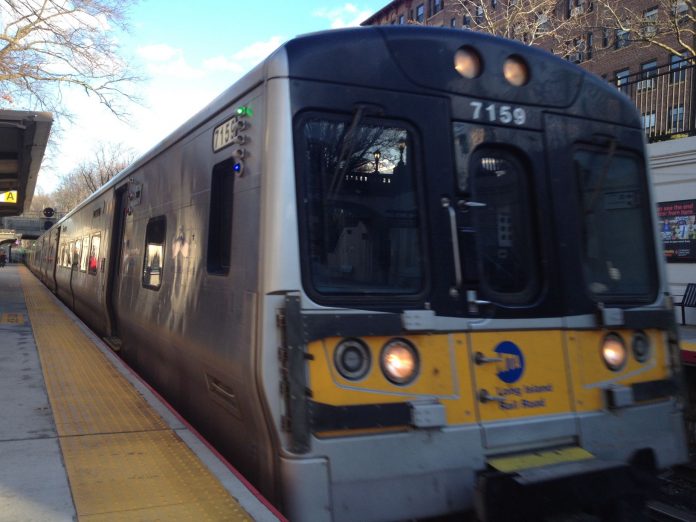The MTA board approved a design for construction and awarded a $1.813 billion contract to 3rd Track Constructors last Wednesday.
The group is a consortium of firms including Dragados USA, Inc., John P. Picone Inc., CCA Civil, Inc., and Halmar International LLC.
The decision comes after a three-month long selection process, according to a MTA release.
The project will create a third track and eliminate several street-level grade crossings across the LIRR Main Line between Floral Park and Hicksville.
Substantial construction is expected to begin in late 2018, with the beginning of 2018 dedicated to continuing community outreach efforts, according to the MTA. The project is expected to be completed in late 2022, according to the MTA.
The renovations will limit delays in travel, according to a MTA release.
“Upon its completion, this modernization initiative will provide faster commuting with a more reliable network, and will allow us to keep the railroad in a state-of-good-repair,” MTA Chairman Joseph J. Lhota said in a statement.
MTA and LIRR officials have consistently met with local elected officials, civic leaders, business owners and residents to get feedback.
New Hyde Park Mayor Lawrence Montreuil said during Tuesdays board meeting that he expects to hear from a point of contact from people in charge of construction in the next month or so to discuss the plans and how the project will impact New Hyde Park.
“We wont know the details until we sit down the the design-build firm and get their layout but the assurance we have from the Long Island Rail Road is we will be engaged and understand what the construction plan is,” Montreuil said.
As the village board receives more information, Montreuil said, the community will be notified through robocalls, the village website as well as community meetings as deemed necessary.
Adjustments to the project have been made in response to resident concerns, such as sound attenuation walls to reduce noise levels and environmental controls to minimize noise and dust during construction, according to the MTA.
The MTA will continue to work with the community and do robust outreach throughout planning stages and construction, an MTA spokesman said.
The third track will span a 9.8-mile segment of the Main Line. On a typical weekday the line serves more than 250 trains and is used by 40 percent of LIRR customers, according to the MTA.
The two track line currently in place is susceptible to traffic, according to the MTA. The “threat of bottlenecking” from emergency repairs and disabled trains is a potential inconvenience to riders, according to the MTA.
The third track will also allow for reverse commuters to take the LIRR from the city into Long Island in the morning.
Three of the seven street-level grade crossings that will be eliminated are in New Hyde Park, and two are in Mineola. The other two are in Westbury.
The street-level grade crossings are a risk to public safety, according to the MTA.
Between 2013 and 2016, there were 127 incidents where a motorist or pedestrian attempted to get around lowered gates while a train was pulling up, according to the MTA. These incidents caused 4,354 late or canceled trains – affecting millions of LIRR customers, according to the MTA.
The street-level grade crossings will be replaced with overpasses, an MTA spokesman said. Not only will it help keep pedestrians and motorists safe, the spokesman said, but it will also help traffic flow.
Whereas cars now have to stop at the gates and wait for a train to go by, the spokesman said, after construction cars can continue to drive under the railway.



